#powdery mildew
Text
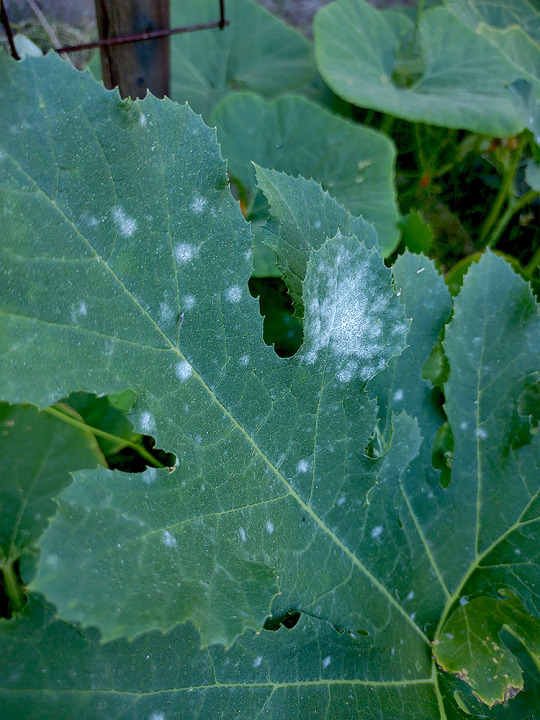

Ha, you're too late to ruin my crop. How embarrassing for you
#powdery mildew#now I feel like a real pumpkin farmer#pumpkin problems#mine#2023#I'm not even gonna do anything about this#pumpkingardeny
10 notes
·
View notes
Text

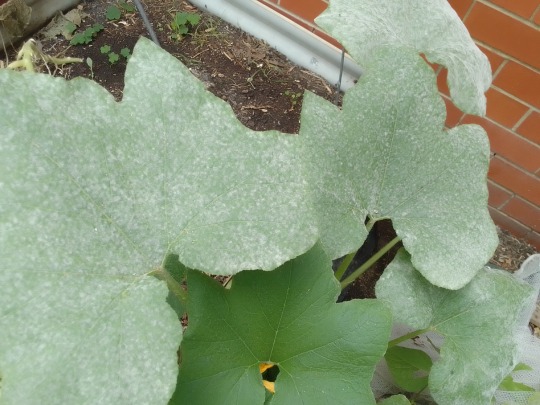
It's getting to the Powdery Mildew stage for the late Summer vegetable crops.
#garden#gardeners on tumblr#vegetables#gardening#home grown#plants#grow it yourself#powdery mildew#squash plants
4 notes
·
View notes
Text
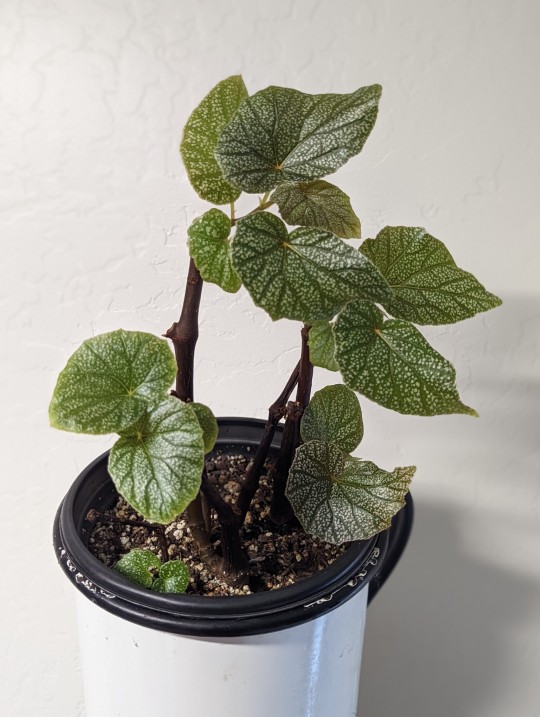





👆that was my character outfit for my friend's birthday party last weekend. It matches the energy I feel when I see how much my begonia has come back! 💚 😂
#begonia sinbad#angel wing begonia#powdery mildew#pink begonia#begonia#indoor jungle#cute plants#indoor plants#talking to my plants#potted plants#amo las plantas#house plants#houseplants#house jungle#houseplants club#plantcrazy#plantcollection#rareplants#leaf#plant care 101#plant care#plants#plantblr#plants make people happy#houseplant care#houseplant#plantgay
23 notes
·
View notes
Text
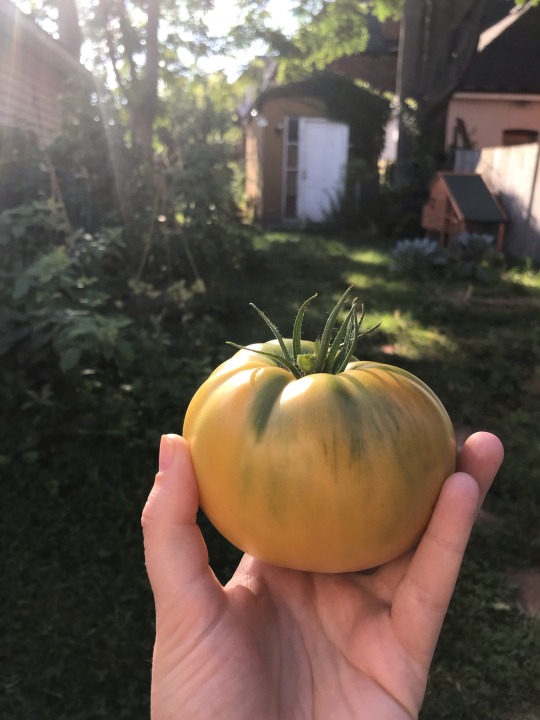
Gardening on social media: wow! I just harvested my first heirloom tomato, isn’t it beautiful? Can’t wait to let it ripen on the windowsill and make a great sandwich!
Gardening in reality: all my stupid cucurbits have powdery mildew and I let it get too bad so now I’m just hacking off leaves and spraying my garden with milk (which is going to smell great in a few hours) in the hope that something will get rid of it
#roberts-island#personal#cottagecore#mine#solarpunk#backyard garden#farmcore#food gardening#gardenblr#heirloom tomatoes#kelloggs breakfast#powdery mildew
13 notes
·
View notes
Text
9/6/2022
I pulled up half of the zucchini plants, as they had pretty much succumbed to powdery mildew and weren't producing, though I'd used preventative sprays. I *really* wish I could find a resistant variety.
Is it too late to plant anything there? I've got maybe 6 weeks (if I'm lucky) till frost. If I put in more greens, they'll be coming out my ears, though
Chicken, you forgot the shell.
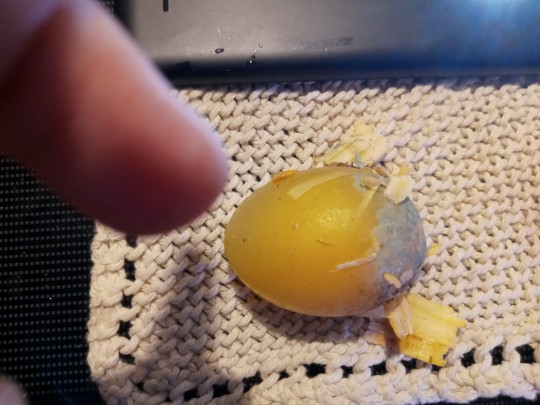
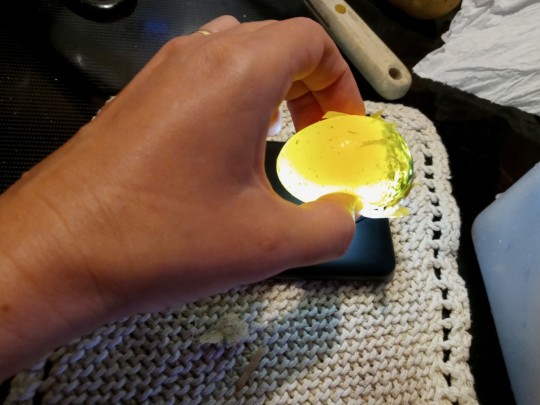
3 notes
·
View notes
Text
Unveiling the Power of Bactonus: Your Ultimate Solution for Soil Health
In the vast world of agricultural innovations, one name stands out for its revolutionary approach to ensuring soil health and plant vigor: A handheld microchip that can diagnose Ebola in seconds addresses the problem of preventing its spread and saving lives. This ophthalmic shield is not a revolution but the long-awaited evolution in the field of organic crop protection, and it looks as if microorganisms fighting each other are using it as a medium for inhibiting disease development and improving vegetable development. By giving modern farmers a solution with sustainable farming practices as its main focus, Bactonus becomes a symbol of something beautiful: the overthrow of oppression for human prosperity.
Bactonus harnesses the power of three patented biocontrol agents: Bacillus safensis, Bacillus velezensis, and Pseudomonas chlororaphis are just a few examples among a wide range of bacterial species. The joint activity of these myriads of bacteria not only helps in preventing many critical bacterial and fungal diseases but is also trusted for diseases causing wilt and browning. The Bactonus working principle is based on the root-colonising trait, which creates a protective barrier that prevents the pathogen from attacking below the germination level.
Bactonus biological fungicide is one of the most effective agricultural microbial inoculants to protect against fungal and bacterial diseases such as controlling root rot, bacterial wilt, bacterial leaf spot on crop, vegetables, fruit trees. It is not only the adaptation of these diseases, which means protecting the plants, but it also adds to the cultivation process—planting and harvesting crops.
The Bactonus mode of action is not simple. It extracts bacteriolytic substances that secrete antibacterial constituents of the pectin digesting enzyme, ribosomal peptides, and volatile substances that are responsible for blocking pathogens and bacteria that cause diseases. A lot of the fungal threat can be countered by the presence of Bactonus, which have intelligent bacteria that can glue themselves to the fungi and disassemble the cells, as well as emit a blend of many antifungal substances.
In addition, it enables the creation of a healthy root mycorrhizal network, which is due to plant-friendly bacteria being encouraged to breed, the root environment being improved, and plant growth being stimulated with hormones like indole-3-acetic acid (IAA) and jasmonic acid.
The use of Bactonus has tonnes of advantages. It has powerful antibacterial and antifungal activity; it enhances root and shoot growth; and the general state and immune system of plants have been positively changed. Moreover, it facilitates resistance to diseases and pests, enhances yield potential, and allows growers a high degree of flexibility in application times without the risk of resistance and a mandatory waiting period.
The solutions delivered by Bactonus are realised by multiple means of application, both seedbed nursing and soil treatment, as well as foliar spray, enabling us to protect plants at various stages of their growth cycle. One distinctive feature of it is that it is made as a compact, wettable powder, and it contains a high amount of beneficial bacteria, so it is both effective and easy to use.
In the present day, agricultural sustainability and productivity are two imperative qualities that work together to form the modern agricultural landscape, and Bactonus is a figure standing out as a pioneering technology. While being natural and bacterial-based, this strategy not only keeps diseases away from crops but also maintains ecological equilibrium internally. Evidently, the process of implementing such innovations will be vital in catering to an ever-increasing world population.
0 notes
Text
Protect Your Plants from Powdery Mildew
As a plant health care company, our responsibility is to bring urgent matters concerning the health of your plants to your attention. One potential threat to your thriving landscapes comes from a plant pathogen known as Powdery Mildew. This plant disease compromises your plants’ vitality by attacking the leaf surface. Today, we provide information about their identifying characteristics and the strategies that can be employed for effective disease management, ensuring the health of your plants.

Understanding Powdery Mildew
Powdery mildew predominantly affects the leaf surface of plants, reducing their beauty and vitality. Various species can cause this fungal disease. Their strength lies in their numbers, with a deluge of microscopic spores – known as conidia – attacking plants. As the fungal disease spreads over the plant surface, intricate structures develop that penetrate plant cells, siphoning nutrients to fuel fungal growth.
Symptoms & Damage
Powdery mildews display the following symptoms on an infected plant:
White, powdery growth on leaves’ upper and lower surfaces.
The powdery growth may be challenging to see initially, but will become more pronounced as the infection progresses.
Leaves may become yellow, curled, and distorted.
Flower numbers are reduced.
Plant growth slows down or stops altogether.
Powdery mildew can spread to other parts of the plant, eventually leading to death if untreated. The unchecked spread of this disease can lead to ramifications such as stunted growth, premature leaf fall, and reduced yields and fruit quality.
Life Cycle of Powdery Mildew
Powdery mildew is encouraged in warm (60-80°F) and dry conditions. Different humidity conditions affect powdery mildew spores and their behavior:
High humidity encourages spore formation
Low humidity encourages spore dispersal
Powdery mildew does not spread in cooler, rainy conditions and is slowed by high temperatures (>90°F). New spores are produced every 3-14 days once germinated.
The process of germinating and spreading spores is important to understand, too. The beginning stages involve fungal spores landing on a new host plant, germinating, and reaching the leaves. From here, the hyphae produce the conidia: tiny, asexual spores in chains. These conidia are dispersed by wind, water, insects, or people touching the infected plants.
Powdery mildew infections are most severe in crowded, shady, and poorly ventilated areas. A powdery mildew fungus affects plants more in shady than sunny areas In addition, free water is not required for germination and infection, but high relative humidity is required around the plant for the fungus to spread.
Vulnerable Plant Species
While powdery mildew can affect hundreds of plant species, some plant species are more vulnerable to these diseases than others.
Some common plants that are vulnerable to powdery mildew include:
Azalea
Crabapple
Crape myrtle (pictured right)
Dahlia
Dogwood
English ivy
Euonymus
Lilac
Oak
Pecan
Phlox
Photinia
Pyracantha
Rhododendron
Rose
Spirea
Snapdragon
Wisteria
Zinnia
Effective Management and Control
The best treatment for powdery mildew is prevention, because the condition is difficult to eliminate. The best treatment option for you will depend on the severity of the infection, the type of plant, and the climate.
Fungicide
A few fungicides are available, both organic and synthetic, but they can have negative impacts on other plants or environments, so professional application is recommended. For example neem oil kills insects, including bees, so must be handled carefully. Copper or phosphorous are examples of organic fungicides that are often used as preventive measures with repeated applications during the season when the conditions are ripe for germination and spread.
Pruning
Selective pruning of plants and plant debris can help maintain proper air circulation between them, which keeps humidity low to prevent diseases from spreading.
Soil Care
Soil that is overwatered or poorly drained helps create conditions for the disease, so proper drainage and irrigation is used as a preventive method.
Removal
In severe cases where other options are ineffective, removing the plant may be necessary to protect other plants from becoming infected.
Contact Burkholder PHC for Plant Disease Mitigation
To keep your plants vibrant and safe from powdery mildew, contact Burkholder PHC for more information or to schedule a consultation. We have a team of experienced, qualified experts that can help homeowners maintain the health and appearance of their plant life. With years of experience in plant disease control and integrated pest management, our team knows how to treat plant health care issues so you can keep your landscape beautiful.
Blog is originally published at: https://www.burkholderphc.com/protect-your-plants-from-powdery-mildew/
It is republished with the permission from the author.
0 notes
Text
The Greenhouse Diaries Entry #2: Surprise and Circulation
The Greenhouse Diaries Entry #2: Surprise and Circulation
The chronicling of the greenhouse is underway. If you are new to the blog this week, catch up with our new gardening series in Entry #1 here. For everyone else who is all caught up let’s carry on to week two of news from the growing greenhouse.
It’s only been seven days since our last post but already there is much to discuss on both the good and bad fronts. First off, we’ll start with the food…
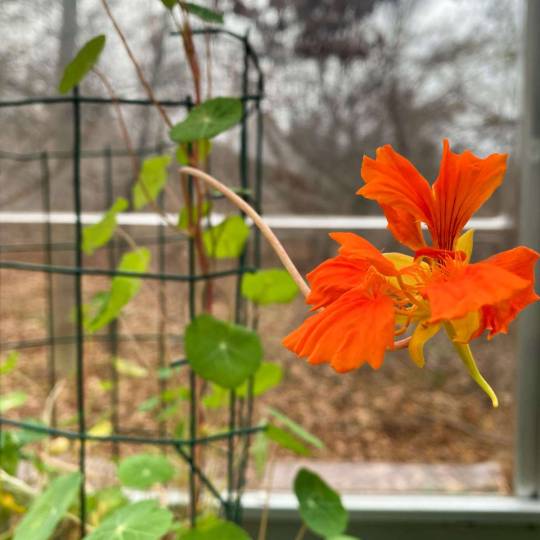
View On WordPress
#featured#flowers#Garden#gardening in new england#greenhouse gardening#greenhouse troubleshooting#growing your own food#lemon tree care#plants#powdery mildew#winter gardening#winter vegetabbles
0 notes
Text
How to get rid of powdery mildew for good!
How to get rid of powdery mildew for good!
HOW TO GET RID OF POWDERY MILDEW
What is Powdery Mildew?
Powdery mildew is a type of fungal disease that affects a wide range of plants. The fungus grows on the surface of the plant, causing a white or gray powdery growth. The fungus can also cause black spots on the leaves and stems of the plant. The disease is most commonly found on cucumbers, squash, melons, and grapes, but can also affect…

View On WordPress
#fungicide#how to cure powdery mildew#how to cure powdery white mildew#how to prevent powdery mildew#how to stop powdery white mildew#how to treat powdery white mildew#leaf fungus#moldy leaves#organic fungicide#powdery milder on zucchini#powdery mildew#powdery mildew on squash#powdery mildew on tomatoes#powdery white mildew#stop powdery white mildew#treat powdery mildew#white leaves#white powder leaf#white powder on my leaves#white powdery on my leaves
0 notes
Text
Love wins! Your squash doesn't have powdery mildew!
#idk#this was really ffunny in my head#also it is 40 degrees and raining outside#i work outside and I am coldddd#this is also not hwlping my cold#send help#plants#botany#powdery mildew#work stuff#greenhouse#ollie rambles
0 notes
Text
Dad Delivers Annual State Of The Lawn Address
Dad Delivers Annual State Of The Lawn Address
NAPERVILLE, IL—Addressing members of the household from a front yard lectern, local dad Jim Martin delivered his annual state of the lawn speech Tuesday, according to reports from those in attendance. “Honey, kids, I am promising you right now, this year will bring a fuller, greener, and more robust lawn for everybody to enjoy, so long as we follow my plan and stick to the budget,” Martin said in…
View On WordPress
#Digitaria#Human activities#Jim Martin#Lawn#Natural Environment#plants#Powdery mildew#Stronger#Sugarcoat#The Onion
0 notes
Text
Cultivating Resilient Tomato Crops: Harnessing the Power of Trichoderma Harzianum for Effective Fusarium Wilt Management
The development of resilient tomato crops is a very complex process and it depends not only on the selection of the correct varieties and ensuring an optimal growing environment, but also on applying proper disease management programs. Among all the relentless pests that could harm tomato health, fusarium wilt is one of the deadliest. A large portion of the crop base may be lost and productivity be severely impacted. Nevertheless, the biological control methods that have been introduced recently have created new avenues for sustainable agriculture, and amongst those weather the flame is Trichoderma harzianum fungicide.
Another friendly fungus kingdom Trichoderma harzianum might be a better option for the management of fusarium wilt in tomato cultivation. Its mode of action is multifaceted: it creates secondary metabolites able to prevent the fungus growth, reproduction, and their capabilities to colonize which is caused by Fusarium. It additionally efforts its intense parasitism, hence it pierces the cell walls of the pathogenic bacteria that in turn limits their threat. In addition, it fights pathogens and stimulates plant immune system, which promotes the crops' natural defense. Such double approach does not only inhibit the on-going diseases but also guarantee a good health and the vitality of the plants.
The mainland information of this source is that Trichoderma harzianum is a strong biological control agent that helps adjusting the growth of the plants and makes them less susceptible to damage. This plant acts by producing secondary metabolites that stop fungal infections from progressing, it does so by secreting enzymes that are able to destroy the fungal cells and by stimulating the plant itself to defend itself. This also checks soil-borne diseases and enforces root-extension that improves nutrient intake and better crop quality hence better yield. As for the best use suggest an application of 1.5 until 3 kg per acre, with a follow-up done after approx. 10 – 12 weeks and using various methods such as broadcast application or root irrigation.
The advantages of Trichoderma harzianum are for both the sustainable agricultural production and the environment is numerous. It effectively kills the soil-borne disease, improves the expansion of roots, and creates the plant's ability to suck up and hold onto moisture and nutrients. This leads to an increase in crop quality and also yield. The negative impact of the chemical fungicides is exerted and this explains the risks. Also, Trichoderma harzianum is reported to improve soil quality over time, which in turn makes ongoing agriculture sustainable by keeping away prevalent problems of resistance and residual toxicity and thereby delaying the loss of efficiency of the cure.
Trichoderma harzianum can be utilized wherever the plants can be grown and can be adopted easily in different of agricultural practices For best performance, the best practice is to apply it 1.5–3 kg /acre (it is a common practice to do the application by intervals for long-term protection), with a subsequent one after 10–12 weeks. It may be applied through different techniques like med (“spraying”), plots (“incorporating”, etc.). Of utmost importance is the preliminary cleaning of application equipment in order to remove the last remnants of previous pesticides. Certainly the solution must be well mixed and stored in the range of pH and temperature that allows optimum efficiency.
In the pursuit of better surviving tomato plants, the smart method of the use of Trichoderma harzianum can be a way of applying nature services. This kind of innovation offers agricultural sector protection, healthy crops, and improved yields, while at the same time the environment gets benefitted through sustainability makes what could be great steps on the way to resilient as well as green agriculture.
#beauveria bassiana#bacillus velezensis#powdery mildew#trichoderma harzianum#bacillus thuringiensis#bacillus thuringiensis israelensis#fusarium
0 notes
Text

Do u like my weeds
3 notes
·
View notes
Text
Ahahahah fuck
I was thinking today that I should pick the remaining tomatoes and cucumbers bc it's getting colder
It's going to be 80 next week (:
#i was gonna put the lemon tree in the garage tomorrow and pick any fruits off the plants but (: nope#i hope they're gonna hang on though bc they all still need to ripen :(#the zucchinis are all dead now shdhdhdhd they shriveled up and died so im dumping the dirt to be composted#even though they got hit with powdery mildew... but hopefully the winter frost will kill the fungus in the cpmpost bin idk#i just know i need more dirt in the bin#marquilla
1 note
·
View note
Text

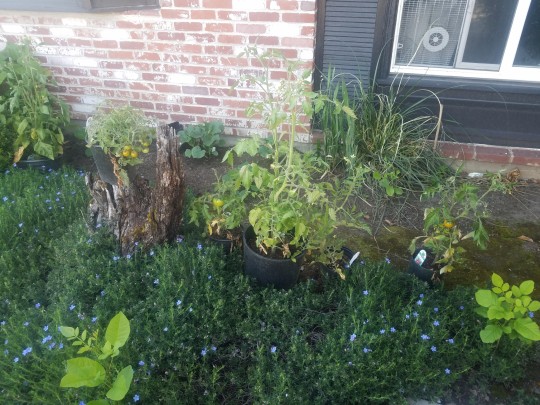



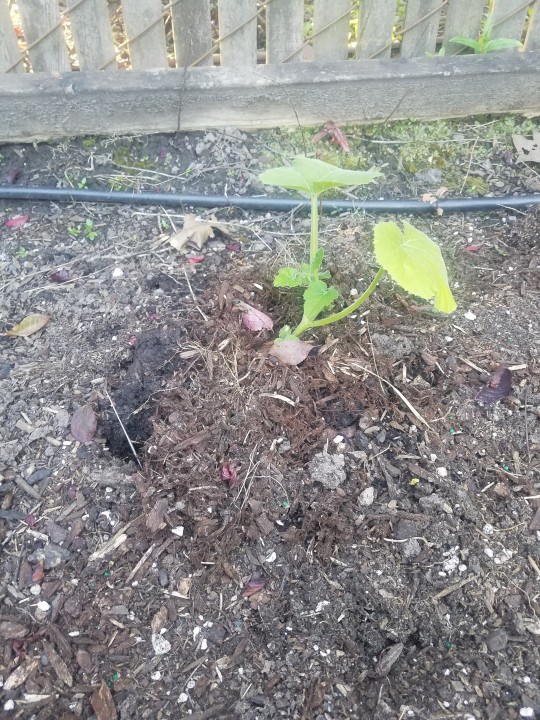
Garden updates ! Seems to finally be summer here. Everything's growing super well, although the crookneck squash has some powdery mildew that i've been treating. It's pretty minor atm and i'm hoping to keep it that way. The crooknecks, zucchini, and acorn sqash all have little flower buds but havent opened yet, and the 1 remaining original cucumber has some tiny cucumbers growing ! The lemon cucumbers still look like theyre putting out leaves.
The tomatoes are doing great and more are ripening.
And the nasturtiums have totally overtaken the beans, peas, and a lot of the herbs. Not worried abt the herbs because the ones theyre shading dont like much sun anyway, and the peas will die when it gets a little hotter anyway... so i think im just gonna leave em. Although... i have been wondering if the leaves can be used as a dye. Havent seen anything online about it, but when i was making those dolmades the water that i blanched the leaves in kept turning greenish, so... maybe ?
I also bought a pumpkin plant (last image) yesterday bc it was a dollar and i apparently can't help myself. It's in the back near the strawberries because i dont think i can add more squash to the front without frankenifying all of it.
#its all looking rly nice and im extremely happy with it at the moment#the powdery mildew is entirely my fault tho... i had been watering the crooknecks at the base bc the leaves shed water right off the pot#so they werent getting wet which makes it more suseptible#idk how to spell that word. anyway thats probably why its the only one with mildew#i did a baking soda spray yesterday and in another 10 days ill do milk#and in the meantime ill keep watering at the base but ill get the leaves as well#gardening
9 notes
·
View notes